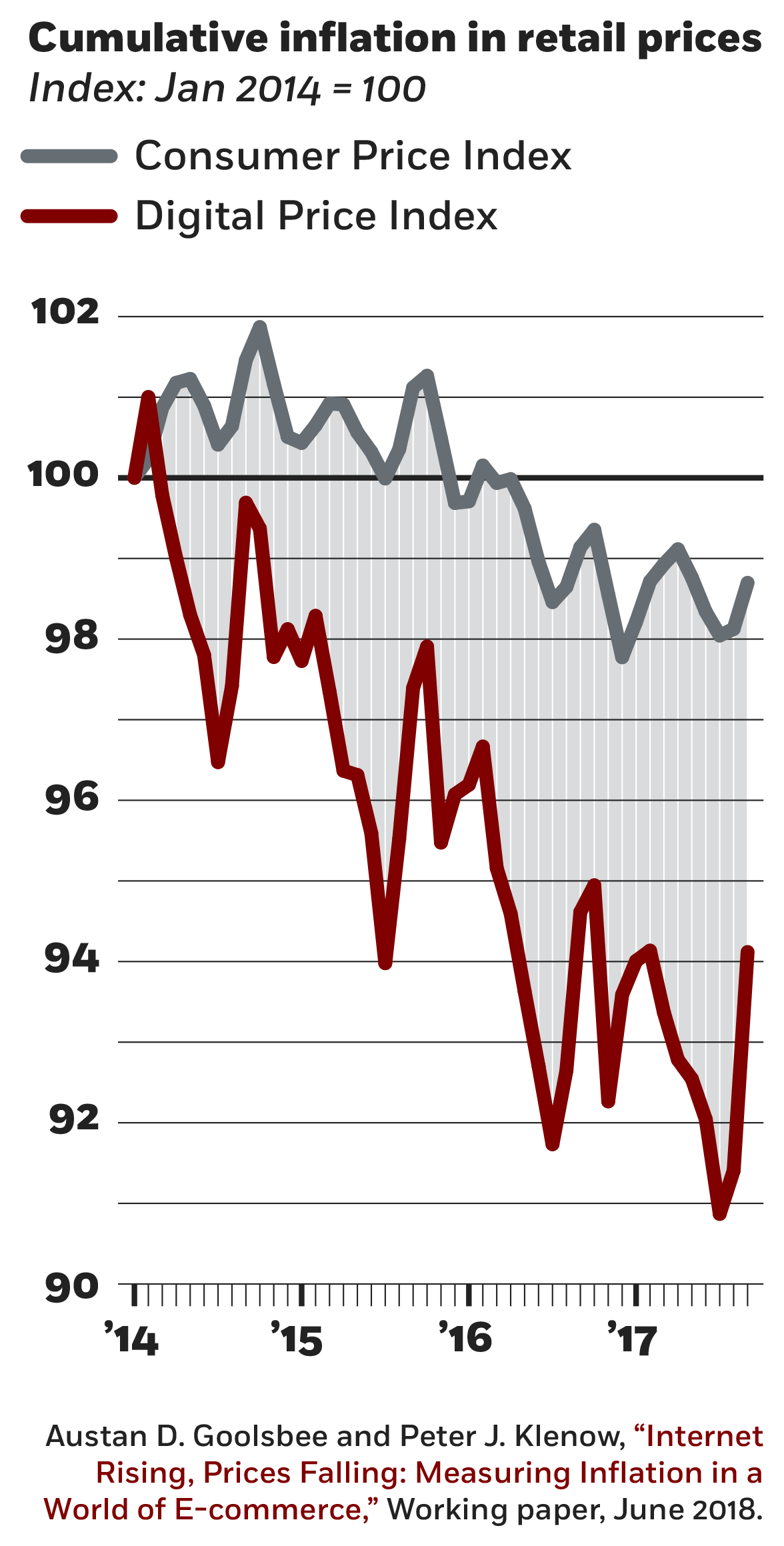
How High Interest Rates Harm Innovation
Monetary policy decisions can have meaningful long-term effects.
How High Interest Rates Harm InnovationInflation is lower online than in brick-and-mortar stores

Austan D. Goolsbee and Peter J. Klenow, “Internet Rising, Prices Falling: Measuring Inflation in a World of E-Commerce,” Working paper, June 2018.

Monetary policy decisions can have meaningful long-term effects.
How High Interest Rates Harm Innovation
Is inefficiency inherent in the matching of students and colleges?
How Colleges Can Make the Admissions Process Easier for Students, and Themselves
Yale’s Hélène Landemore joins the Capitalisn’t podcast to talk through her vision of participatory democracy.
Capitalisn’t: Reinventing DemocracyYour Privacy
We want to demonstrate our commitment to your privacy. Please review Chicago Booth's privacy notice, which provides information explaining how and why we collect particular information when you visit our website.